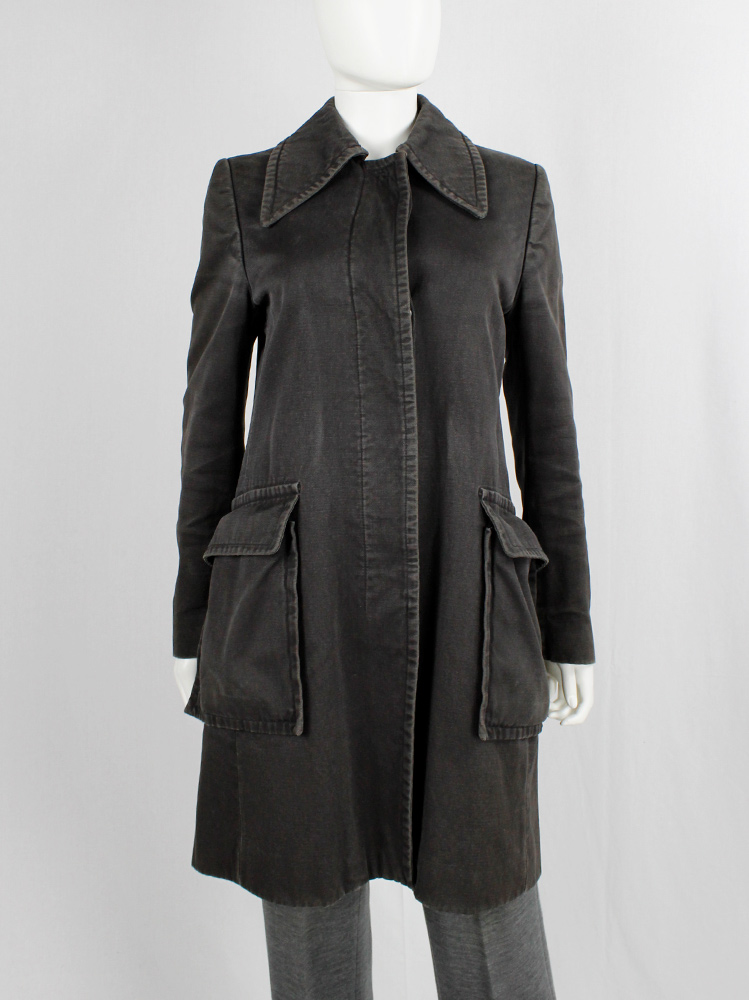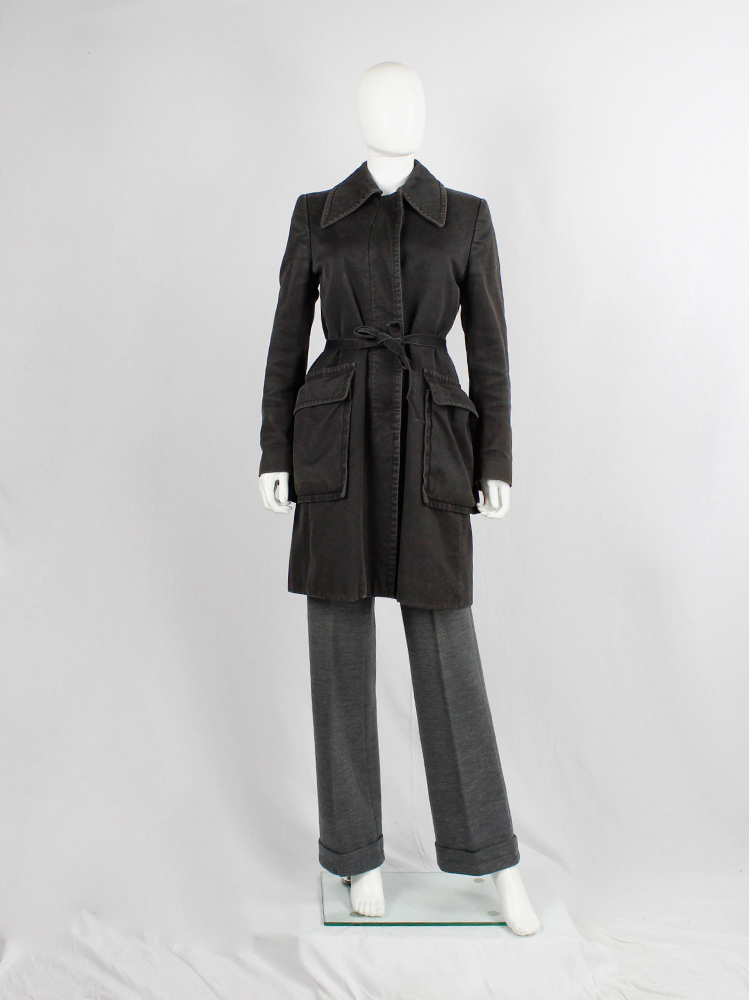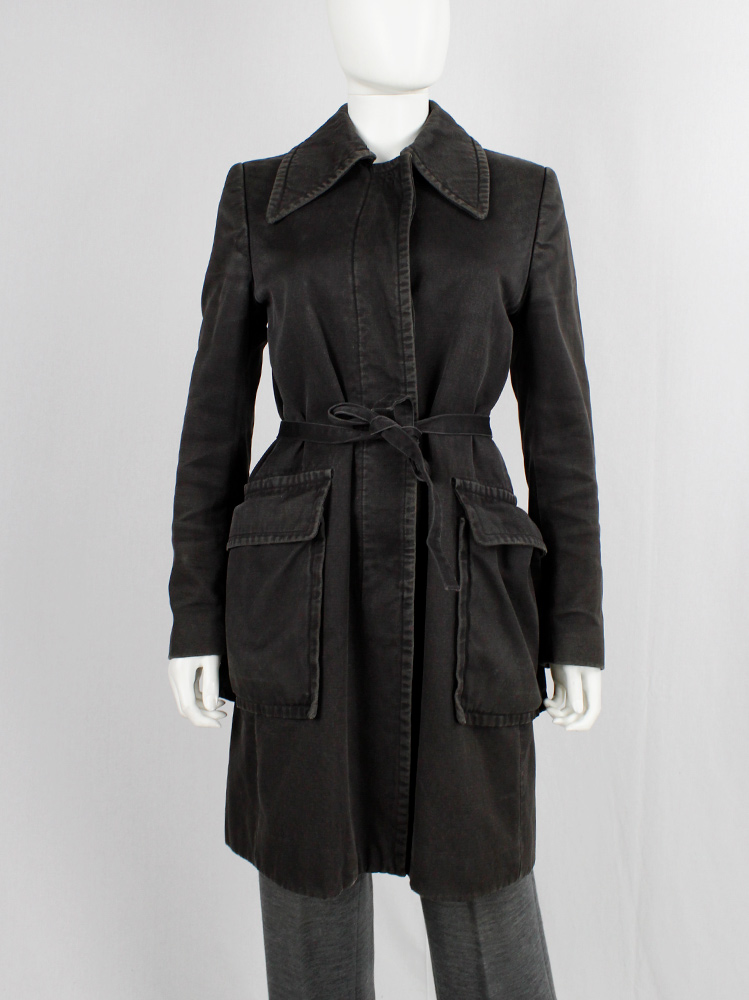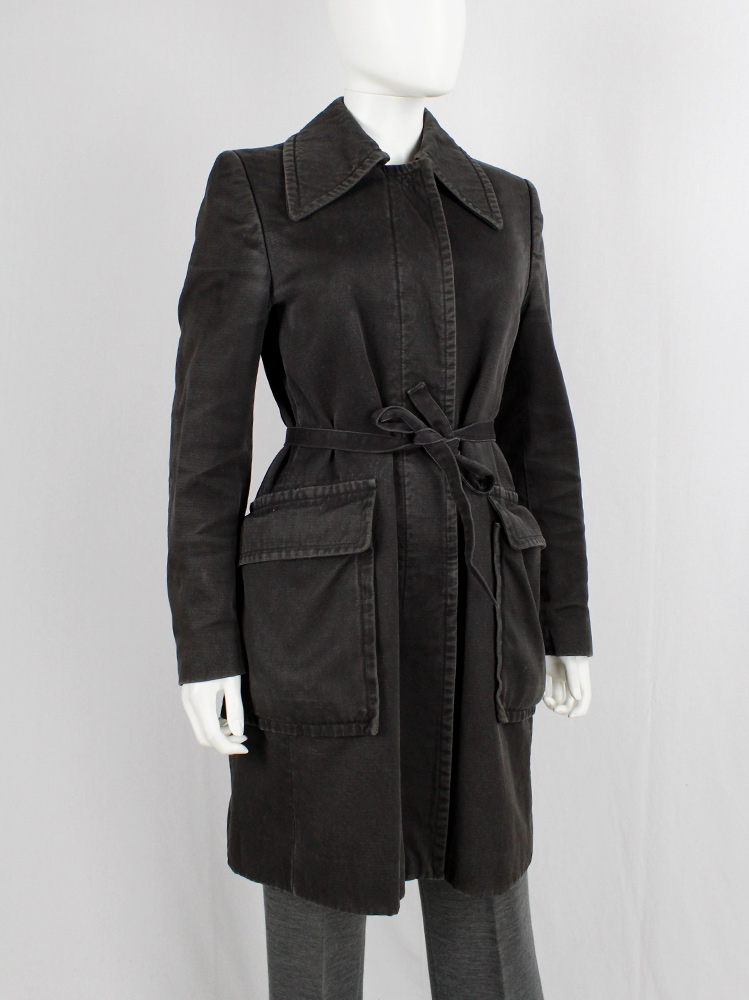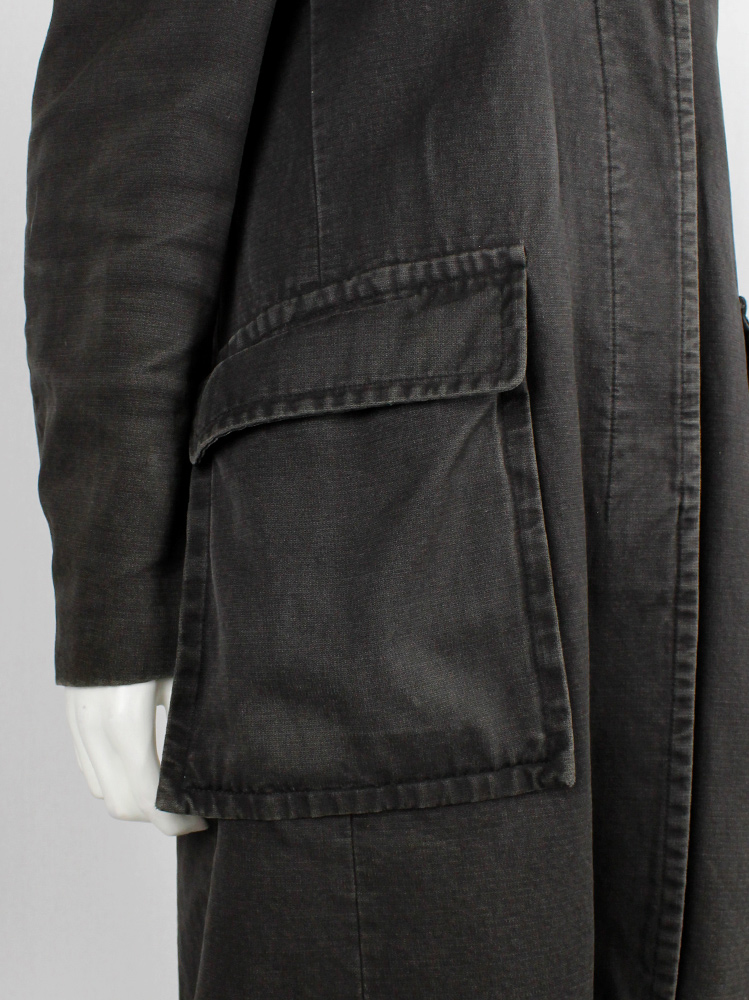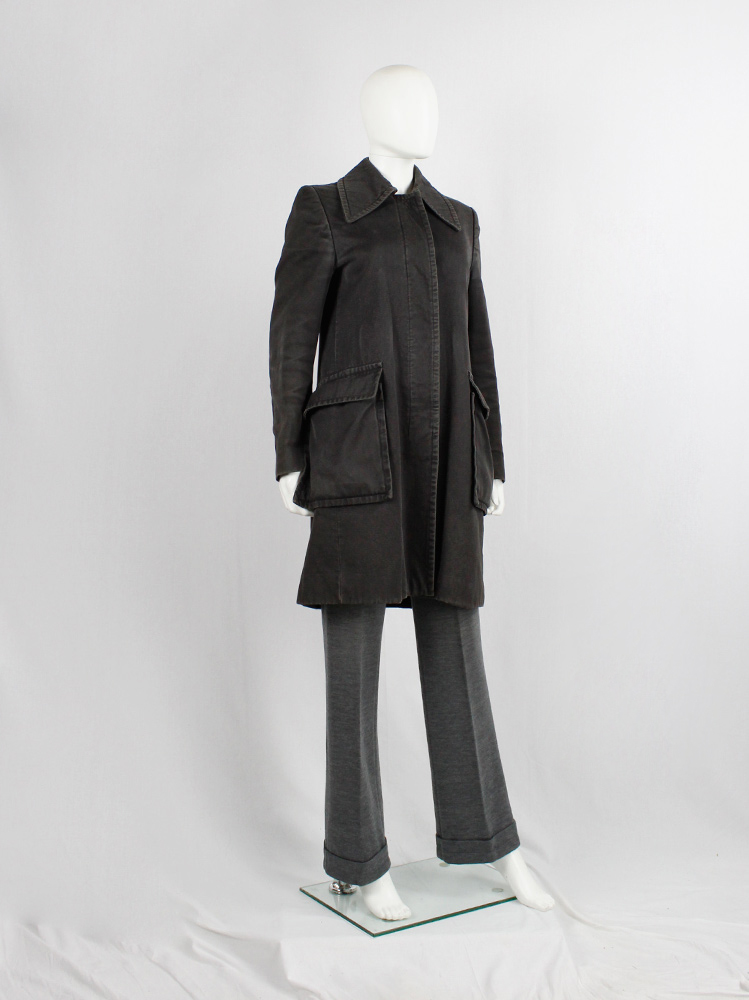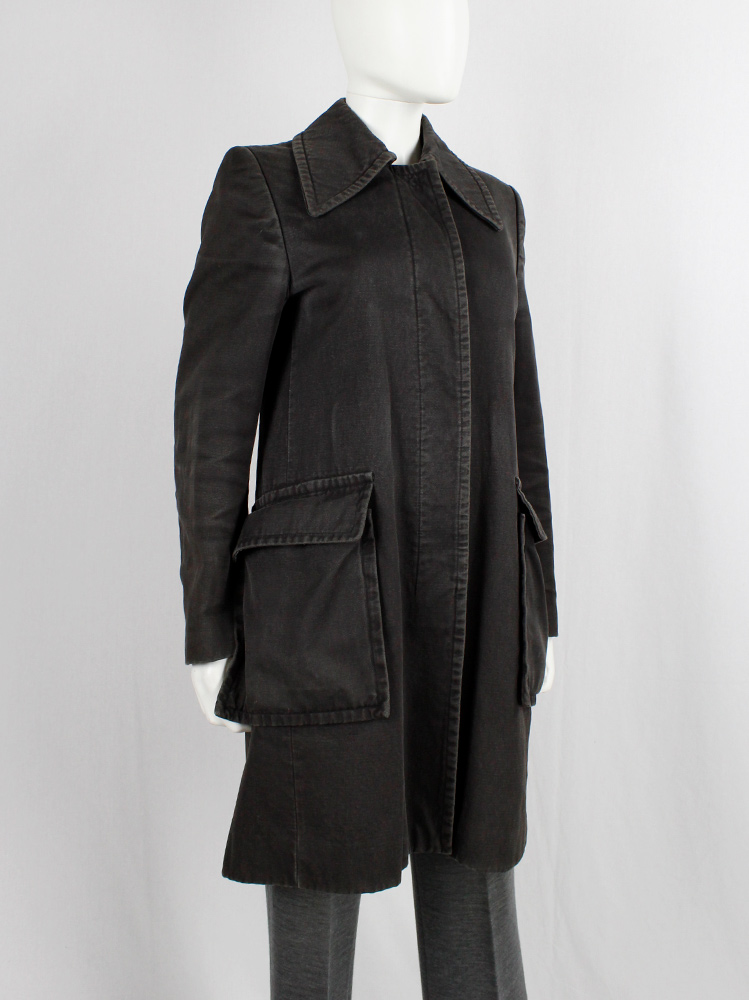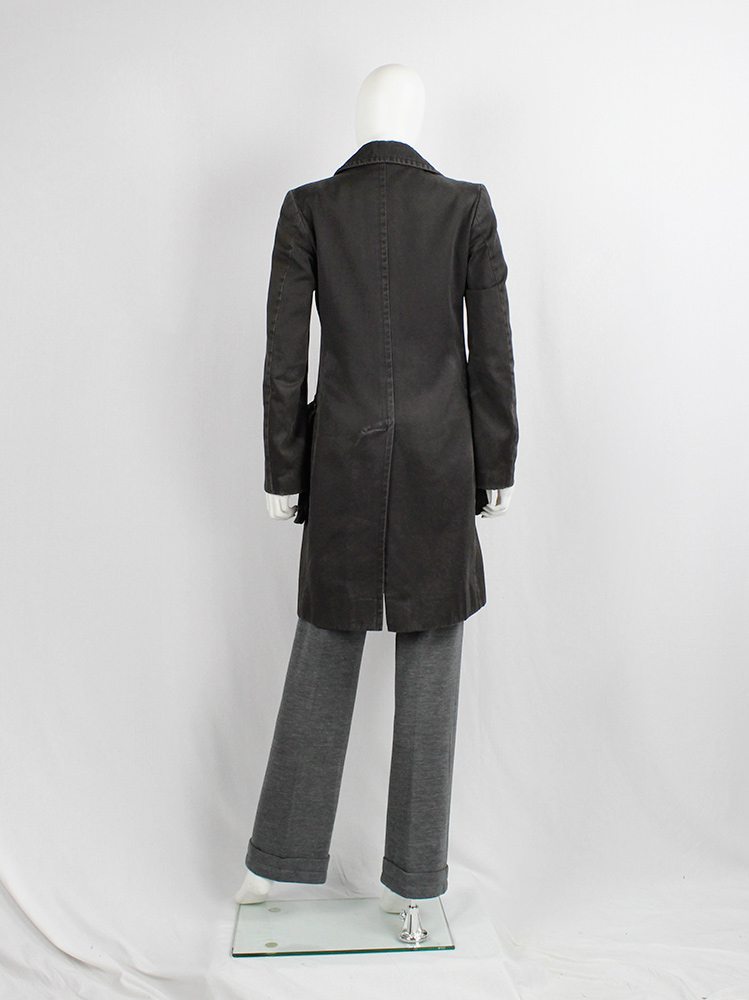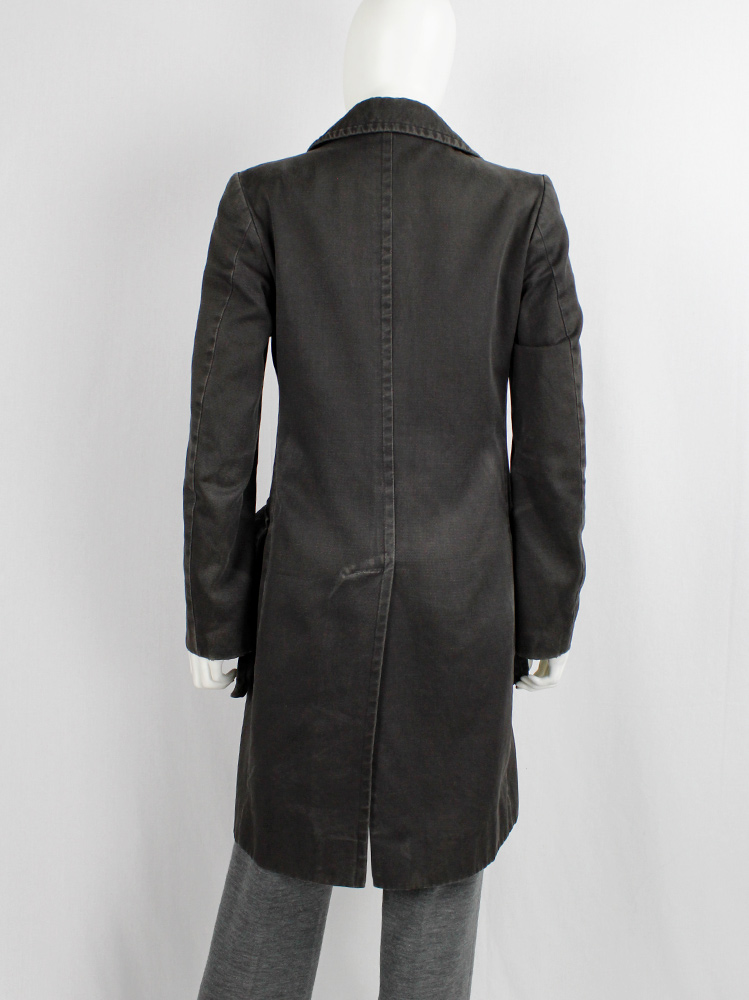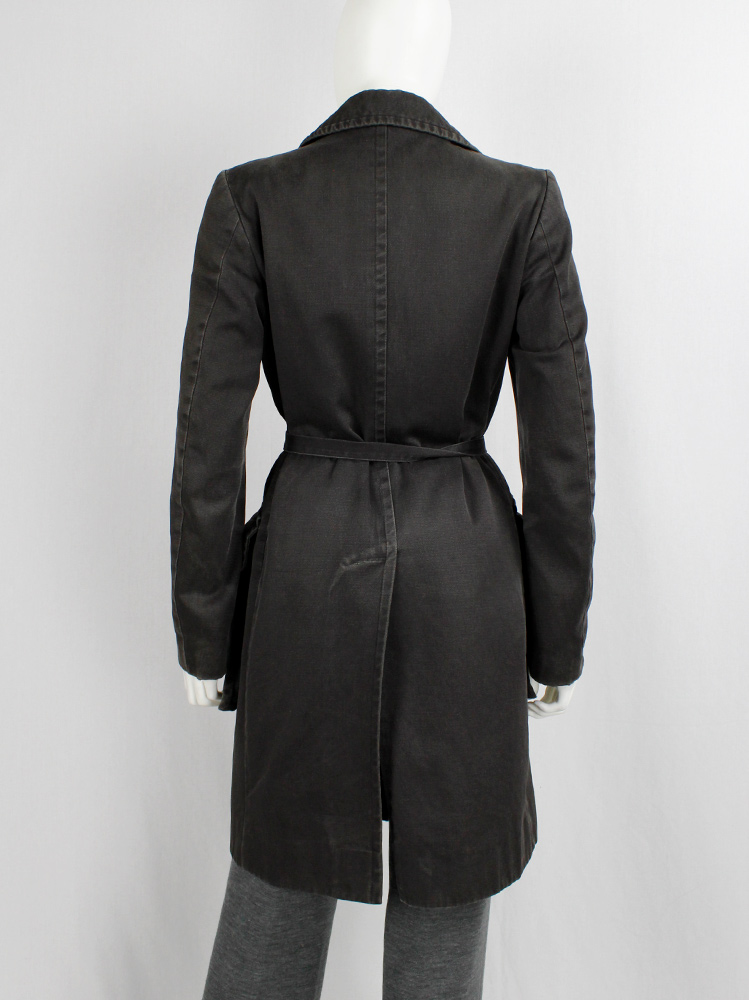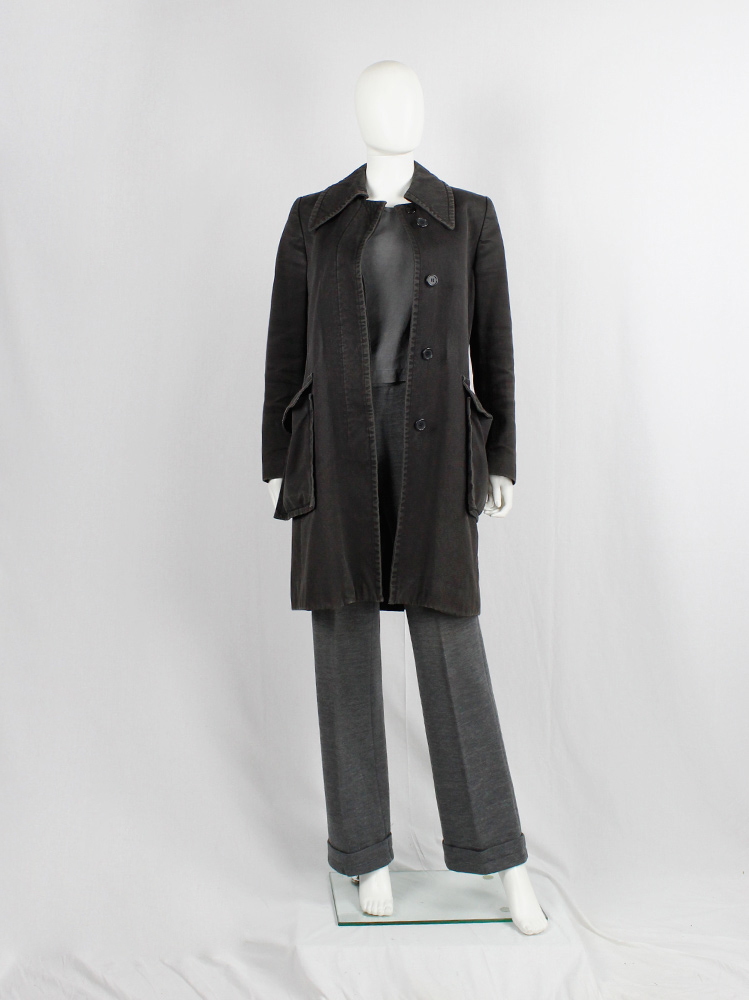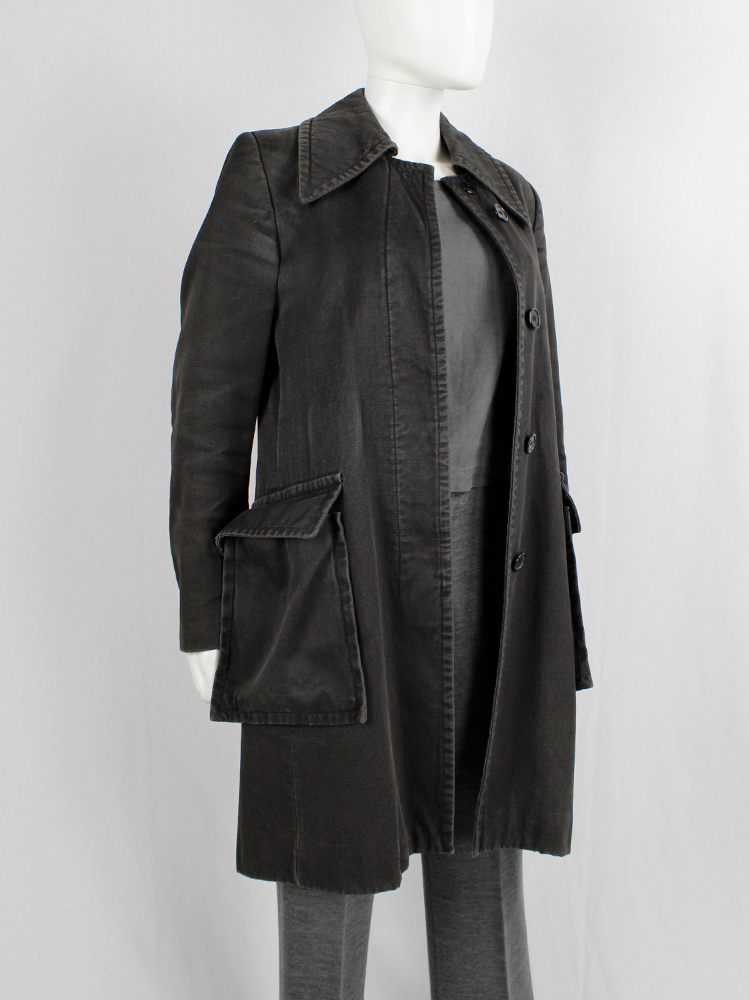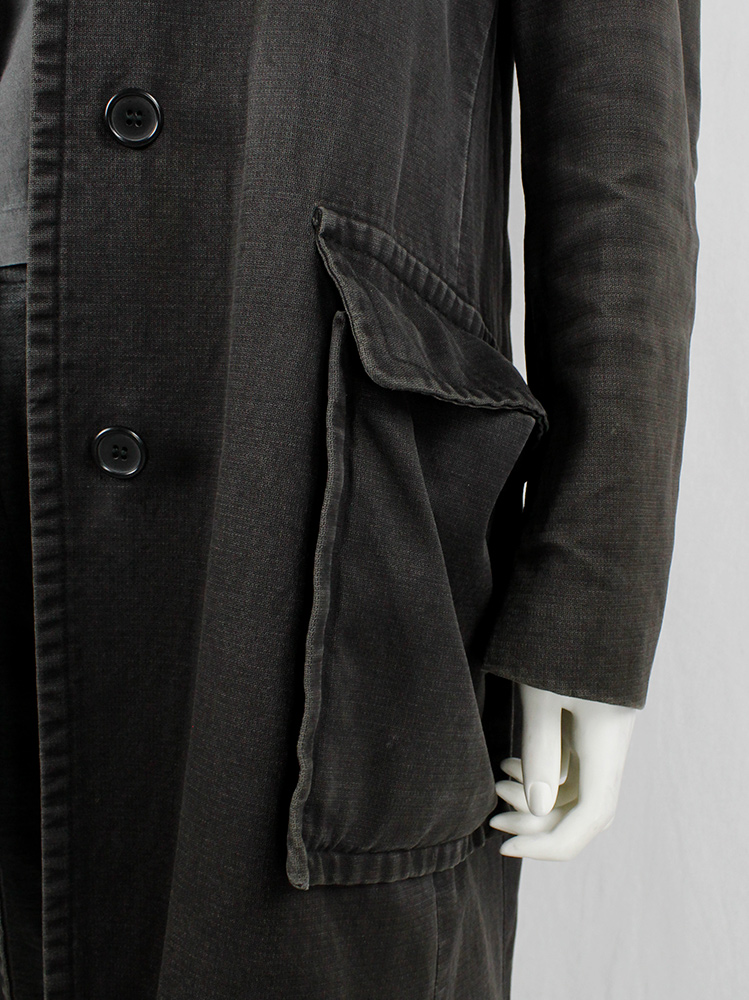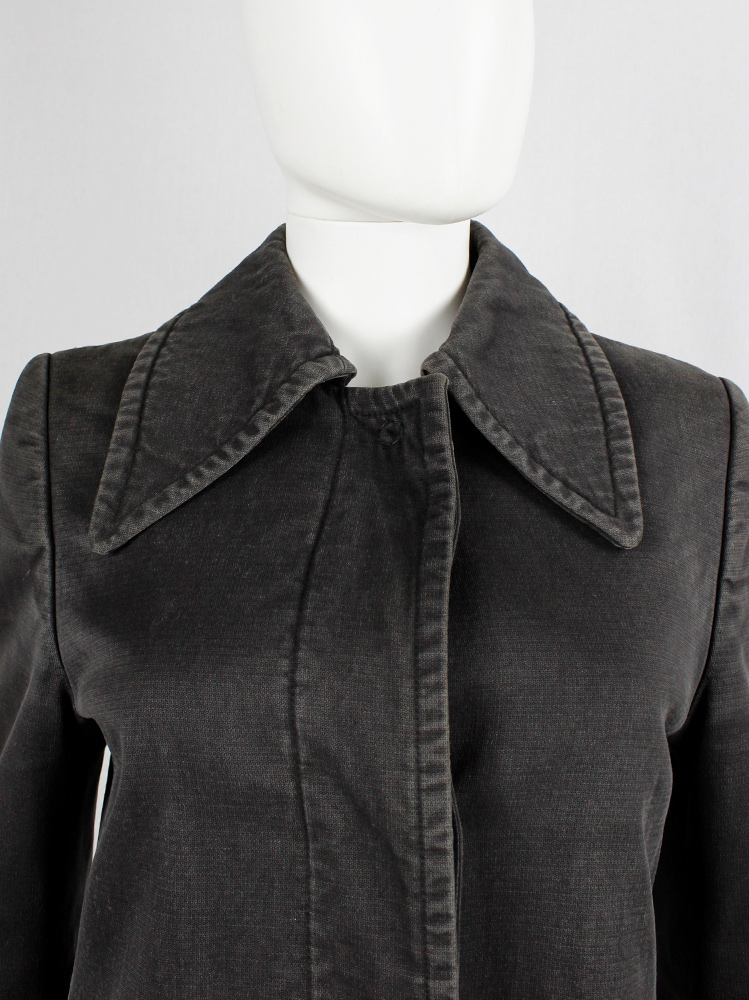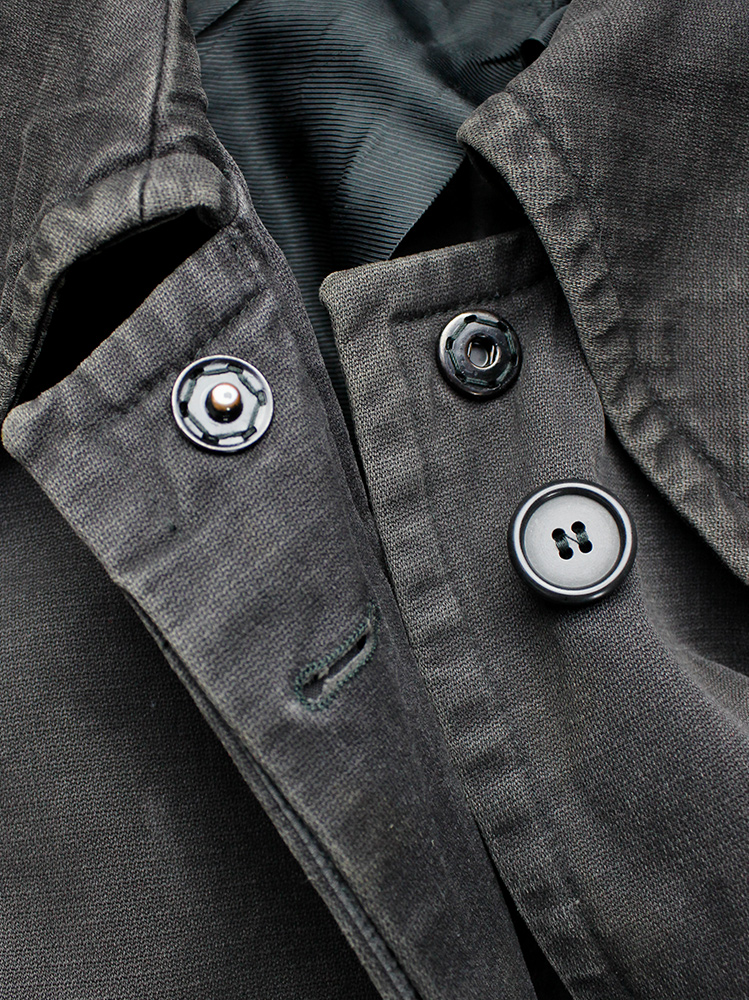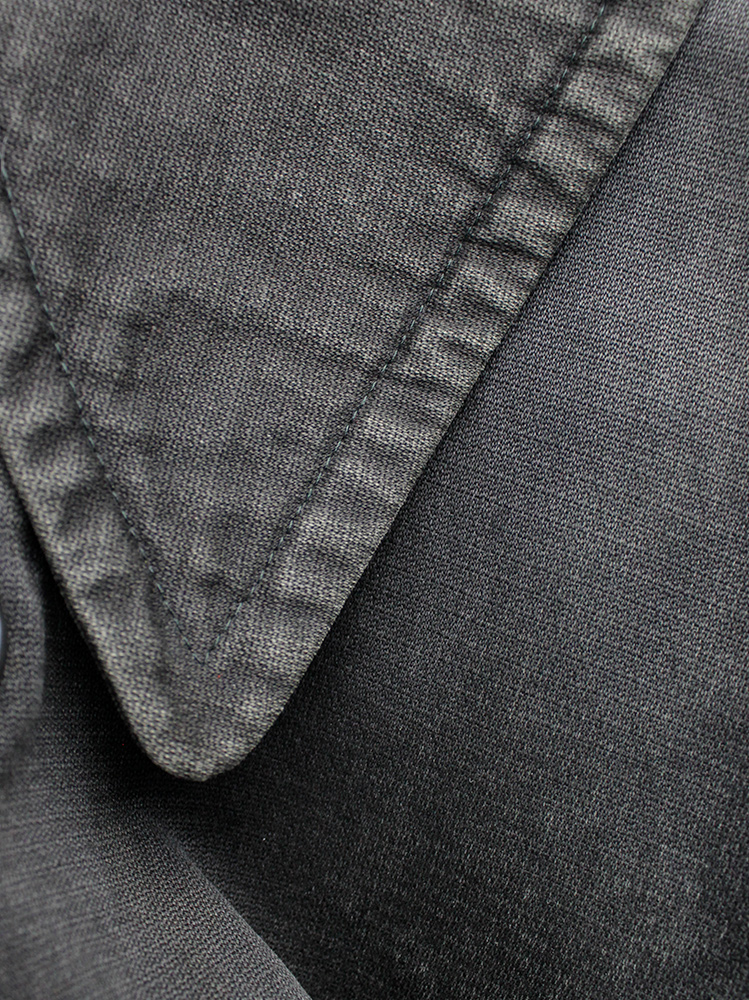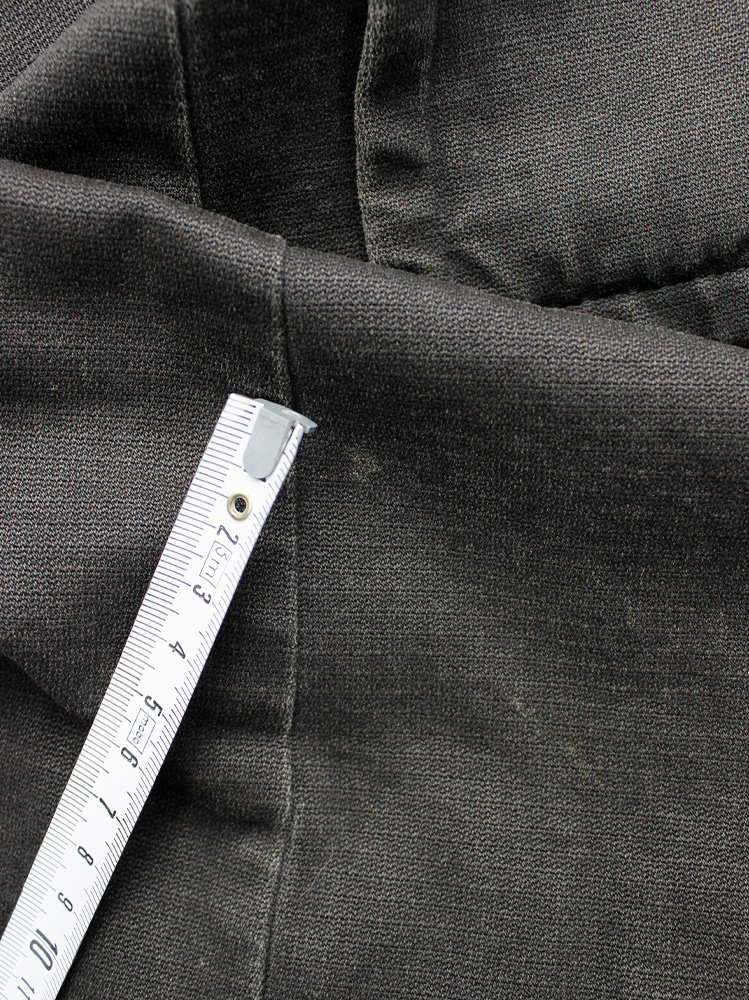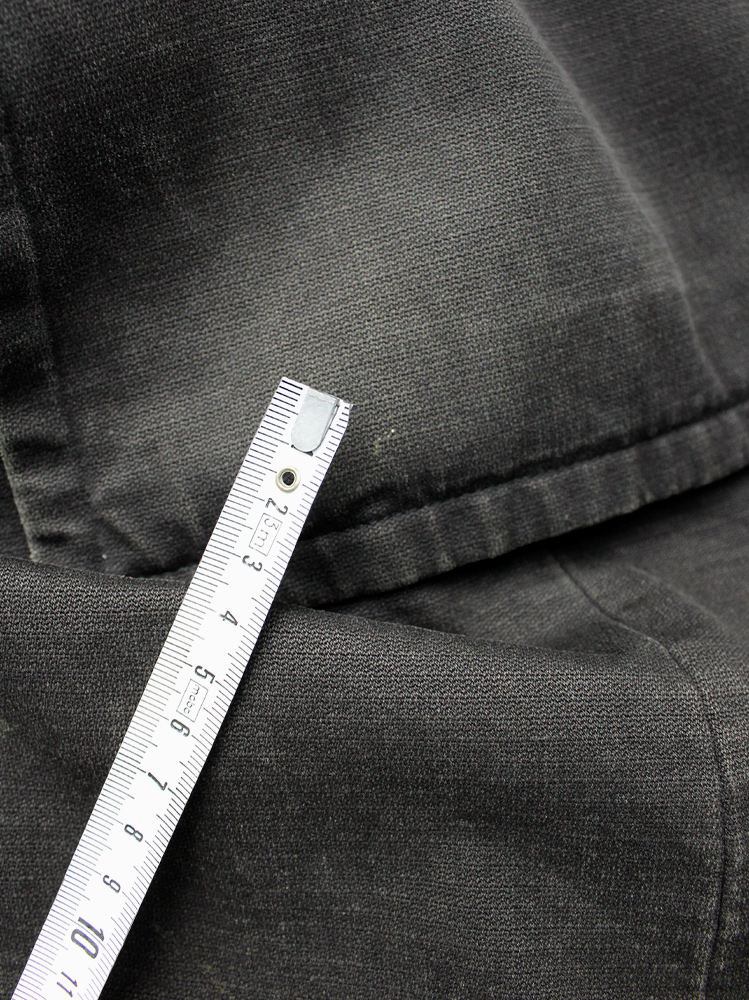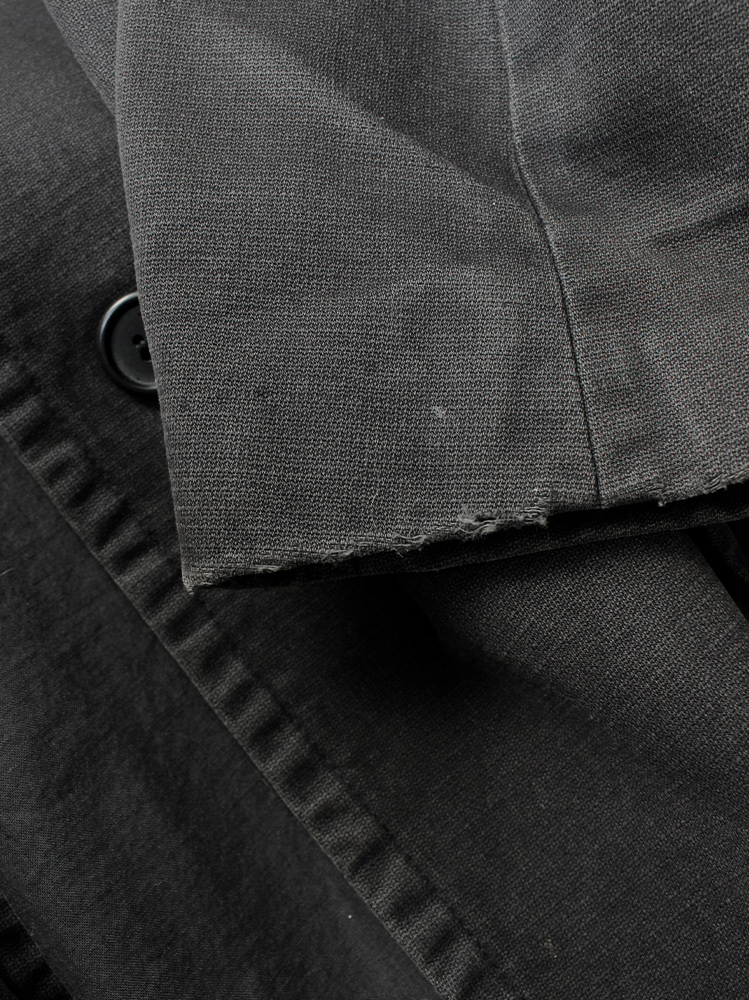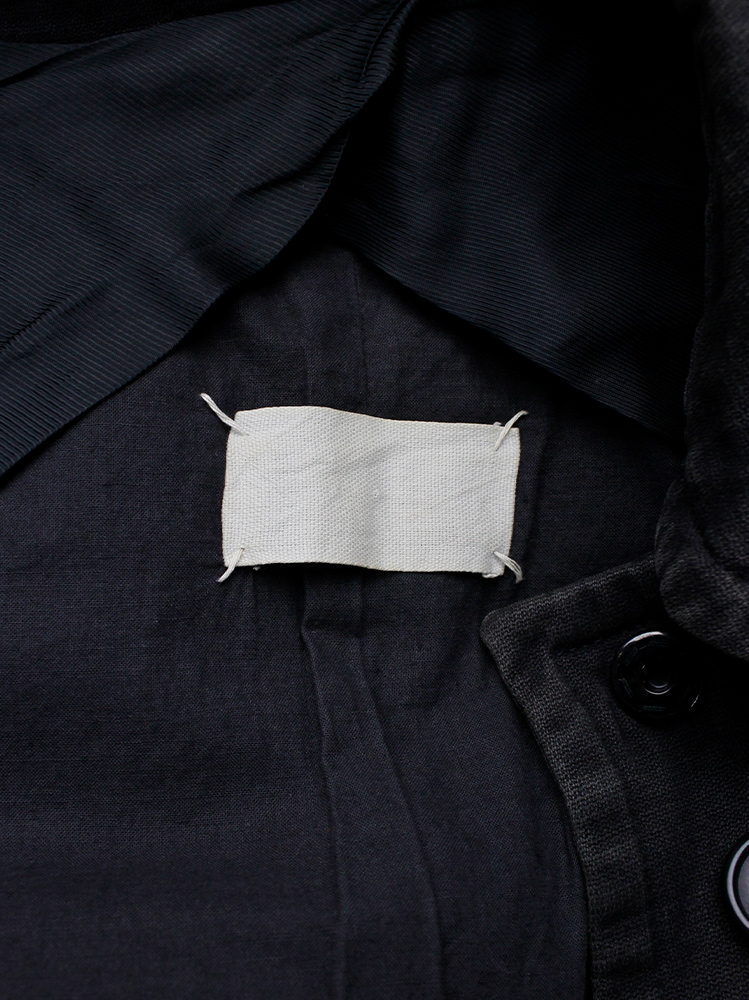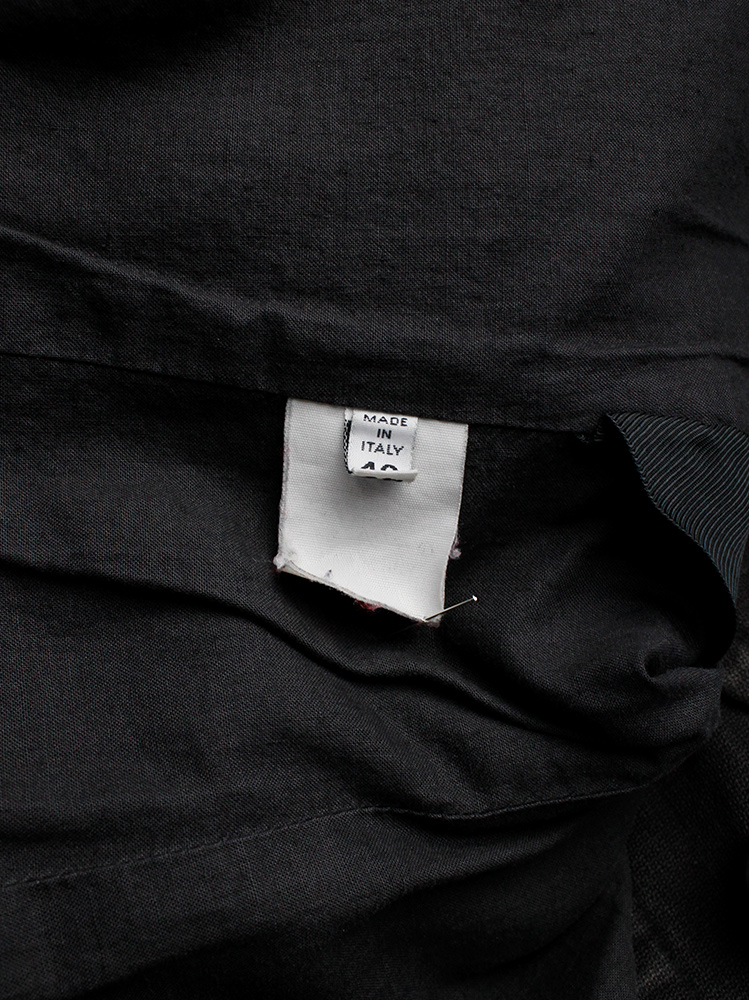Description
Similar items
-
Ann Demeulemeester black belted cardigan with different buttoned overlapping panels — fall 2011
-
Comme des Garçons black coat with open back and forwards folded panel — spring 2020
-
Junya Watanabe black deconstructed blazer with panelling and sequin and lace inserts — fall 2014
-
Ann Demeulemeester black blazer with high closing neckline and satin details — spring 2008
-
Y’s Yohji Yamamoto black pinstripe cutaway jacket with cream standing collar
-
Comme des Garçons black pleated cape vest closed with oversized front bow — fall 2019
About Maison Martin Margiela
Martin Margiela is a Belgian designer, graduating from the Royal Academy of fine arts in Antwerp.
He is often mistaken as one of the ‘Antwerp Six’.
At the time when Ann Demeulemeester,Walter van Beirendonck, Dries Van Noten, Dirk Van Saene, Dirk Bikkembergs and Marina Yee were showcasing in London, Margiela was already working for Jean Paul Gaultier.
Maison Martin Margiela’s discreet brand label consists of a blank piece of cloth or with the numbers 0-23. The trademark is attached with four small, white stitches, visible on the outside on unlined garments. The concept behind this was so the tag could be cut out, making the garment anonymous like it’s creator.
Margiela’s work is highly conceptual; a large piece of his repertoire is playing with conventions and recycling. Influenced by Rei Kawakubo, he works with deconstructed garments and frayed edges, nevertheless are his garments perfectly tailored. A lot of his work also includes trompe-l’oeil, a reference to René Magritte.
Martin Margiela was appointed as a Guest member of the Chambre Syndicale de la Haute Couture in 2010. His work is more often talked about as ‘art’ rather than fashion.
His most iconic piece is his tabi boot, Margiela’s interpretation of Japanese split-toe tabi socks. Margiela left his eponymous label in 2009, leaving the creative staff to continue the collection for several seasons.


























